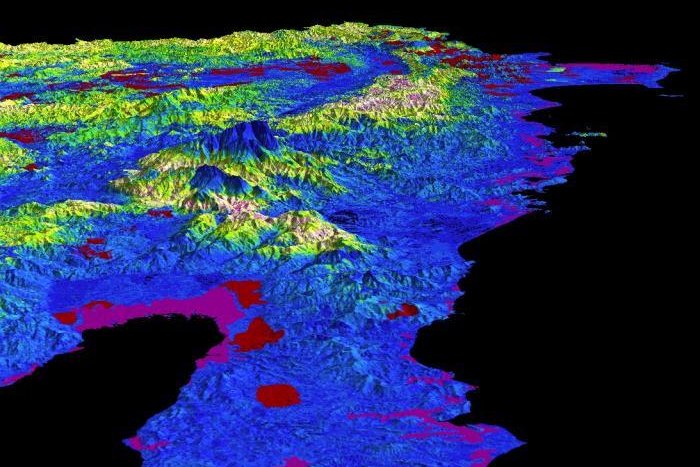Scientists compiled a map of Borneo's carbon stocks using data collected by the Carnegie Airborne Observatory. Photo by Carnegie Institution for Science
Dec. 4 (UPI) -- Scientists are using the Carnegie Airborne Observatory, an airplane filled with scientific instruments, to map Malaysian Borneo's carbon stocks. The effort will inform conservation decisions on the South Asian island.
Planet Earth hosts millions of tons of stored carbon. Forests, lakes, tundra, wetlands and more all serve as carbon reserves that prevent large amounts of carbon from escaping into the atmosphere and accelerating climate change. Some of the largest reserves are found on Borneo, the planet's third-largest island and home to one of the oldest rainforests in the world.
To ensure this carbon stock remains locked up in storage, conservationists must protect Borneo's forests. The ongoing research efforts by ecologists at the Carnegie Institution for Science -- in coordination with the Sabah Forestry Department in Malaysian Borneo, the Southeast Asia Rainforest Research Partnership and others -- will help conservationists locate and track the island's most important carbon reserves.
"We shall apply the information gathered for the common good of society, particularly, in mitigating against the worst effects of climate change," Sam Mannan, chief conservator of forests with Sabah, said in a news release. "This project is of immense value to tropical forest management."
Tropical deforestation and ecological degradation account for roughly 10 percent of the planet's annual carbon emissions. Meanwhile, Borneo is home to one of the most efficient carbon recycling and storage systems on the planet. The forests in the state of Sabah on the Northern end of Borneo, have converted massive amounts of atmospheric carbon into organic materials.
The latest research efforts show, some 40 percent of the island's carbon stocks are without maximum protections -- meaning they could suffer deforestation and degradation should the land be converted into agriculture or cleared for development.
With limited conservation resources, scientists and policy makers need to know which forests should be a conservation priority.
"The nearly 4 million hectares of Sabah's forests are a kaleidoscope of many different habitats and management histories, which required a wall-to-wall mapping effort to truly quantify the amount of carbon they contain," Carnegie's Greg Asner said.
Using the latest data collected by the Carnegie Airborne Observatory, Anser and his colleagues built a map featuring the distribution of Malaysian Borneo's carbon reserves. The findings showed the island could double its carbon stocks by allowing previously felled forests to regenerate. Their survey also identified 50 of the tallest tropical trees ever measured.
Researchers suggest the next steps are to integrate their data and maps with information about local biodiversity and the ways local communities interact with the forests.
"Forest carbon is an important factor in locating places where conservation efforts could make the greatest impact," Asner said. "But other data on canopy biodiversity and animal habitats, such as our work on Bornean orangutans, will also help inform decision-makers."















